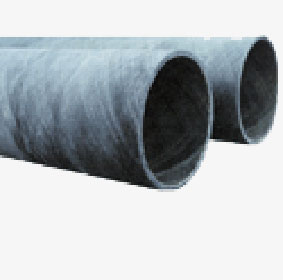Composite Cores
Relentless pressure to reduce costs and improve productivity have created unprecedented demand for innovative ways to decrease waste, improve safety, save money, and increase productivity. While often bypassed as a potential area of improvement, cores are just that. The right core can save huge amounts of money and drastically improve operations.
Unique Features of Composite Cores
Lightweight, high strength cores which can be reused indefinitely.
The end of tear out and crushing problems.
Far lighter than metal without corrosion and shipping problems.
Less than half the weight of a comparable aluminum core, but offered at similar prices.
Available in diameters up to 500 centimeters and in lengths up to 8 meters.
PROBLEMS ASSOCIATED WITH DISPOSABLE PAPER CORES
The converting industry has long overlooked a major source of waste in its use of disposable paper cores. The relatively low initial purchase price of a paper core is misleading when you consider:
Actual cost-per-use
Warehouse storage space
Frequent ordering & receiving
Disposal
Occasional loss of an entire roll of material due to core damage
Inconsistent ID tolerance
Dust contamination
Moisture absorption
Core fires
Paper cores have high costs and performance problems associated with them. In addition to the issues listed above, paper cores offer poor crush strength and tear-out resistance as well as low critical speeds. These factors limit roll size and web speed, obviously reducing efficiency.
Often, the poor crush strength of paper cores cause mills and converters to employ wooden or plastic plugs. Some converters and printers use metal caps which can cost as much or more than the core itself to solve the core crushing problem. Either way, the plugs and caps must be purchased, stored, inserted, and removed prior to disposal. In many cases, the metal caps themselves may tear away from the paper core, resulting in the need to remove and salvage a roll. All of these factors increase the cost of “inexpensive” disposable paper cores.
PROBLEMS ASSOCIATED WITH METAL AND PLASTIC CORES
Traditional alternatives to paper cores include metal and unreinforced plastics. Steel cores, in addition to being relatively expensive, create ergonomic and safety issues, corrosion problems, and unnecessary added expense when shipping to other plants or customers. Aluminum cores are lighter than steel, but are still very heavy. In some plants, theft has been a problem due to the high salvage value of aluminum.
Unreinforced plastic cores, while solving many of the problems associated with metal, cannot support heavy rolls – they distort and crush under the tension of the wound roll, especially if the roll is left to stand for any period of time. Even under modest loads, plastic cores suffer from distortion which often renders rolls unusable and lost to scrap.
THE BEAUTY OF COMPOSITE CORES
Fiberglass composite cores are lightweight, high strength cores which can be reused indefinitely. They withstand high tension so they won’t crush, and it is impossible for them to tear out regardless of torque magnitude. They’re far lighter than metal and don’t suffer from corrosion problems. In fact, ARDOB composite cores are less than half the weight of a comparable aluminum core, but are offered at similar prices.
Fiberglass cores are available in diameters up to 500 centimeters and in lengths up to 8 meters.
